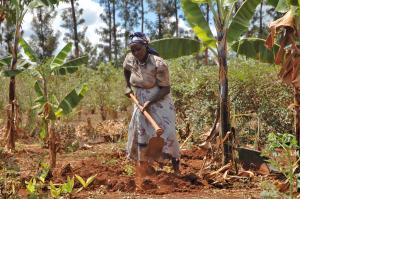“When should we plant?” is a question increasingly being asked by small farmers in sub-Saharan Africa who depend on rain-fed agriculture. To help answer such questions, climate scientists are being urged to provide more reliable and relevant local climate data, and better communicate their knowledge on climate adaptation techniques."When we think about preparing for imminent disasters it is not possible to prepare for flooding, for example, just a few days in advance, which we get from the weather forecast. We need to think about preparedness further in advance and think in terms of what kind of decisions we can make, say, three months in advance, such as moving important resources away. We need a continuum of information,” said Simon Mason, the chief climate scientist at Columbia University's International Research Institute for Climate and Society (IRI) in the USA. According to Mason, more effective short, mid-range and seasonal weather forecasting is needed for the development of useful early warning systems.
Spatial weather tools, including satellite imagery and weather forecasts, allow the processing of weather data over different space and time frames. By allowing better integration of historical data with real-time weather data, such tools can improve the accuracy and impact of forecasts. “If we are using projections of what will happen in 80 years to plan for the next 10 years, then we will have very bad information,” he said. “We have to match the kind of climate information we have with our decision-making time frames… For [climate] adaptation, we are much more interested in what is going to happen in the next few years,” he said. Mason was speaking at a recent forum on disaster risk management at which a partnership between the UN International Strategy for Disaster Reduction (ISDR) and the African Centre of Meteorological Applications for Development (ACMAD) was launched. The partnership is aimed at facilitating the linkage between climate scientists and disaster risk managers as well as policymakers.
“There is a need to convert the information coming from scientists into usable material such as maps… There is a need to strengthen more partnerships with regard to climate change in the Horn of Africa region,” said ISDR Africa head Pedro Basabe. Poor linkages in the past have meant that climate research does not necessarily inform policy for disaster mitigation: Complicated, long-range climate projections are often hard to sell to policymakers. “We are fairly renowned for being incomprehensible to everybody," said Mason.
User-friendly data
To help make climate data more palatable, the World Meteorological Organization's Global Framework for Climate Services (GFCS) is helping with capacity-building in regional climate bodies such as ACMAD, the Inter-Governmental Authority on Development (IGAD), and the Climate Predication and Applications Centre (ICPAC). This in turn can assist national bodies produce customized information that is more relevant for communities. Communication training workshops with climate scientists are also planned. “There is a need to provide the science in summary for the policymakers. We need to try [to] communicate science in a more simple and relevant manner," said Maarten van Aalst, director of the Red Cross/Red Crescent Climate Centre. In a situation where climate projections are fraught with uncertainty, van Aalst said: “We need to plan [for disasters] in as practical circumstances as possible, even in anticipation of better information.”

